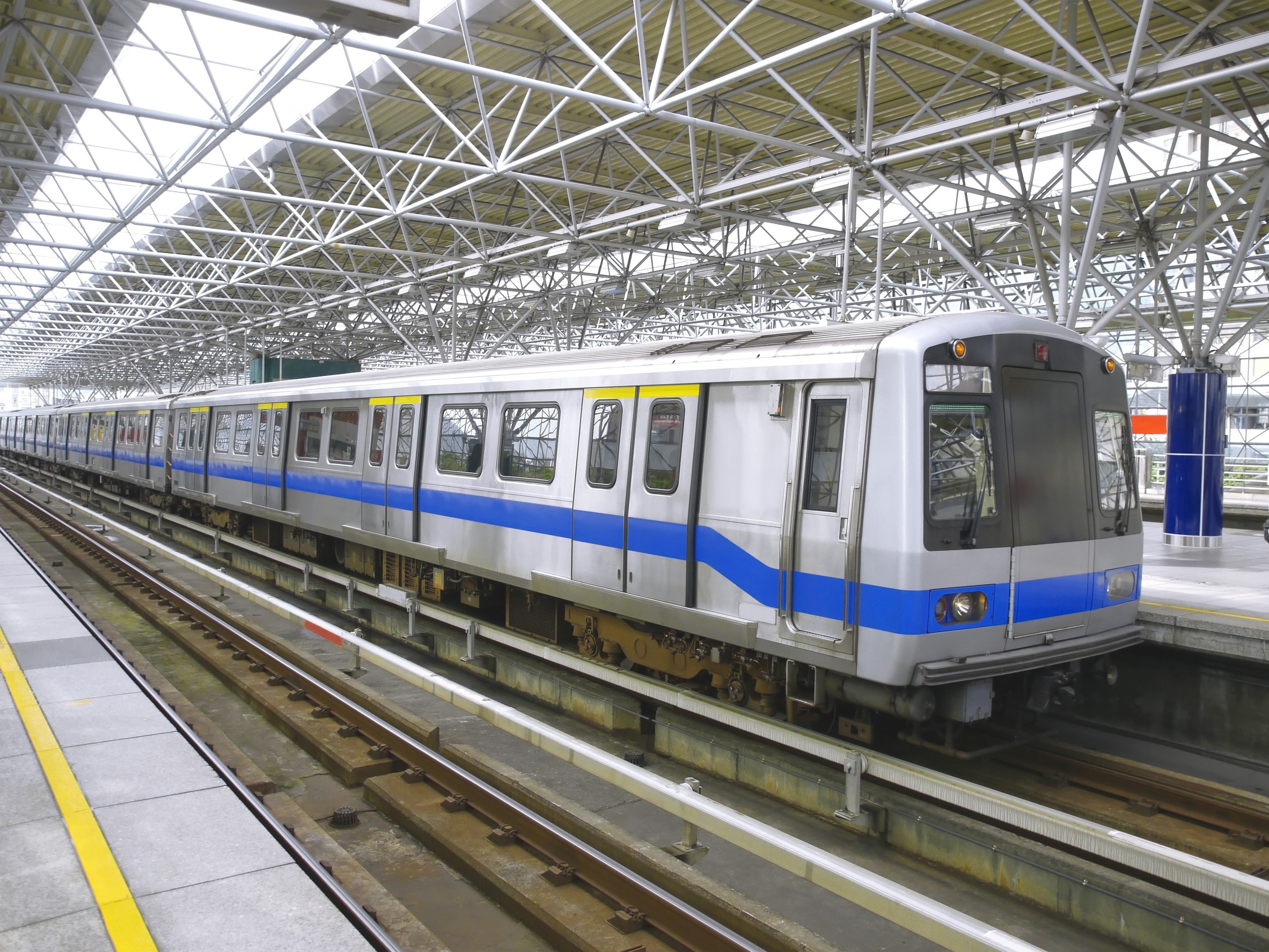According to the Office of Rail and Road, 1.6 billion passenger journeys were made by train in 2023/24. Travelling by train is becoming increasingly popular, with people choosing the railways for day trips, long-haul travel, and commuting, and they expect to arrive at their destination safely. But what happens when things go wrong?
In this guide, we’ll tell you everything you need to know about claiming train accident compensation, from how to use our compensation calculator all the way up to how to find the right public liability solicitor for you.
What You Need To Know
- You can make a train accident claim if you were injured in an accident that wasn’t your fault.
- Train accident compensation is calculated based on a number of factors, including evidence and injury severity.
- The operating network is responsible for your health and safety up to a point while travelling on a train.
- A solicitor from our panel could help you make a claim on a No Win No Fee basis.
Contact Us
Our team of advisors are here to help. If you’re ready to get started, or if you have any questions about public liability claims that our guide doesn’t answer, you can talk to a member of our team today by:
- Calling us on 0800 408 7826
- Contacting us online
- Using the live chat feature
Jump To A Section
- Train Accident Compensation Calculator
- How Is Train Accident Compensation Determined?
- Who Is At Fault After A Train Accident?
- Who Can Claim For Accidents On Trains?
- The Common Injuries In Train Or Rail Accident Claims
- How Can I Make A Claim For Rail Or Train Accidents?
- Make A No Win No Fee Train Accident Claim
- More Information
Train Accident Compensation Calculator
A train accident compensation calculator can help you get a clearer idea of what your payout could look like by using figures from the Judicial College Guidelines (JCG). For example, according to this document, you could get up to £44,840 for severe finger fractures.
The JCG provides guideline compensation brackets that are used in compensation calculators and by professionals when they value your claim. These figures aren’t guaranteed amounts, but they can be used to help you get a broader view of what your compensation could look like. You can find some examples of these in the table below; however, please note that the first entry is not a JCG figure.
| Injury | Compensation | Notes |
|---|---|---|
| Multiple severe injuries and special damages | Up to £550,000+ | This illustrative compensation bracket covers both general damages for multiple severe injuries, and special damages, which includes financial losses like lost wages and travel costs. |
| Moderate Brain Damage (i) | £183,190 to £267,340 | This bracket covers a personality change, risk of epilepsy, moderate to severe intellectual deficit, and no prospect of employment. |
| Severe Back Injuries (iii) | £47,320 to £85,100 | Compensation in this bracket will cover disc fractures and lesions, as well as soft tissue injuries that lead to chronic conditions. |
| Minor Back Injuries (i) | £9,630 to £15,260 | A full recovery occurs within two to five years, without needing surgery. |
| Chest Injuries (c) | £38,210 to £66,920 | Some disability, caused by injuries to the chest and lungs. |
| Serious Foot Injuries | £30,500 to £47,840 | This bracket includes injuries that cause either a risk of future arthritis, or continuing pain from traumatic arthritis, as well as prolonged treatment. |
| Moderate Pelvis And Hip Injuries (ii) | £15,370 to £32,450 | Injuries in this bracket will result in a need for hip replacements or other surgeries. |
| Moderate (i) Knee Injuries | £18,110 to £31,960 | This bracket will cover injuries such as dislocations, cartilage tears, or meniscus tears that cause instability and wasting. |
| Wrist Injuries (c) | £15,370 to £29,900 | This bracket covers injuries that are of a less severe nature but still result in some form of disability, like persistent stiffness and pain. |
| Less Serious Leg Injuries (ii) | £11,120 to £17,180 | Simple femur fractures that cause no damage to the arterial surfaces. |
Our compensation calculator combines JCG figures with other details, like your potential lost earnings, to give you a provisional suggestion of what your train accident compensation could include. Keep reading to learn more about how compensation in personal injury claims is calculated, or contact our team today to get started.
How Is Train Accident Compensation Determined?
Train accident compensation payouts are determined by taking two headings into account. The first, general damages, covers your injuries and the effect that these have had on your quality of life. The figures found in the JCG cover general damages, and these can be used to calculate this heading, as well as things like:
- How severely you were injured
- How much evidence you have
- Whether your injuries have affected your day-to-day life
The second head of claim that you could receive is called special damages. Under this heading, you can claim back any financial losses that you suffered because of your injuries. For example, this might include the cost of:
- Lost earnings
- Travel
- Mobility aids
- Childcare
- Medical expenses
- Prescription fees
- Rehabilitation and physical therapy
However, you’ll need evidence of these losses to claim them back. This can come in the form of receipts, bank statements, and wage slips.
If you’d like to learn more about how personal injury compensation is calculated, get in touch with our team. They can answer any questions you might have about calculating compensation for an accident.
Who Is At Fault After A Train Accident?
Who is at fault after a train accident depends on the circumstances surrounding the accident. Generally, the network operating the train owes you a duty of care, which means they have a legal responsibility for your health and safety. This duty is outlined under the Occupiers’ Liability Act 1957, which states that the person in control of the space must ensure that visitors are reasonably safe while there.
For example, if the train operator knew that the doors on a carriage were faulty but left it in service with no warning, this could cause a traveller to get stuck and injured. This would constitute a breach of their duty of care, and the train operator would be held liable for the accident.
Keep reading to find out when you could claim train accident compensation, or talk to one of our advisors today to find out who was at fault for your accident.
Who Can Claim For Accidents On Trains?
You can claim for an accident on a train if you can prove that negligence occurred. This means you need to prove that:
- You were owed a duty of care by the train operator
- They breached this duty
- You were injured as a result
If you can prove that all of these things happened, then you could have a valid claim. You also need to be over the age of 18 to make a claim for yourself. For those under the age of 18, a litigation friend can be appointed by the courts to make a claim on the claimant’s behalf.
If you’re looking to claim for an accident on a train, ensure you are within the time limit. This is set out by the Limitation Act 1980, which states that you need to start your claim within 3 years of the accident occurring. However, there are some exceptions to this rule. Talk to our advisors today to learn more.
The Common Injuries In Train Or Rail Accident Claims
Some of the most common injuries suffered in train and rail accidents include:
- Breaks and fractures: These are common injuries that can happen as a result of slips, trips, and falls. For example, if a rail worker failed to put a wet floor sign after mopping a train carriage, this could cause you to slip and break your ankle.
- Cuts and lacerations: This kind of injury could occur if a train window was cracked, and the operator knowingly kept it in service, resulting in the window shattering and causing small cuts and lacerations on your face and arms.
- Bruises and soft tissue injuries: These could occur if you were trapped in a malfunctioning door, which twisted your knee, causing significant bruising and soft tissue damage. If the train operator had received reports of the doors malfunctioning but took no action to rectify it, then you could make a claim.
These examples cover only a few of the ways in which you could be injured on a train. Contact us today if you’d like to learn more, or keep reading to find out how to claim train accident compensation.
How Can I Make A Claim For Rail Or Train Accidents?
There are a few important steps involved in making a claim for rail or train accidents, including:
Seek Medical Attention
It’s important to seek medical attention as soon as possible. Not only does this ensure that your health and well-being are made a priority and that you get the treatment you need, but it can also be used to create an immediate record of the accident.
Gather Evidence
Gathering evidence is one of the most crucial steps involved in the train accident compensation claims process, because having a valid claim hinges on whether or not you can prove that negligence occurred. Some examples of evidence that you could use to strengthen your claim include:
- Photographs of your injuries or the accident site
- CCTV footage of the accident
- Medical records and other medical documentation
- The contact details of witnesses, allowing their statements to be taken later
- Report book logs, if your injury was recorded on the train or at the nearest station
If you make your claim with the help of a solicitor, they can give you expert advice on how best to strengthen and support your personal injury claim.
Seek Legal Advice
Claiming with a solicitor isn’t mandatory, but it can make the process feel much less complex. However, it’s essential to find the right solicitor for your specific needs and circumstances. At Compensation Calculator UK, we work with a wide range of solicitors specialising in various areas of law, from personal injury to data breach, and they serve clients from all over the country.
Keep reading to find out how a solicitor from our panel could help you on a No Win No Fee basis.
Make A No Win No Fee Train Accident Claim
Our panel of solicitors can help you make a train accident claim on a No Win No Fee basis, because they offer their services under the terms of a Conditional Fee Agreement (CFA). Under a CFA, you get all of their help and expertise without:
- Paying an upfront fee
- Paying for their work as your claim is ongoing
- Paying for their services at all if the claim fails
But if you succeed, your solicitor will take a small success fee from your compensation. The percentage that they can take is capped by law, which helps to make sure that you keep the majority of what you receive.
Our panel of solicitors has decades of combined experience and has helped countless clients all over the country get the compensation they deserve. We understand that making a claim can seem complicated if you don’t know where to start, and we’ll be there for you every step of the way.
Contact Us
We are here to help. If you’re ready to get started on your train accident claim, or if you’d like to learn more about how our panel could help, get in touch today by:
- Calling us on 0800 408 7826
- Contacting us online
- Using the live chat feature
More Information
To learn more about making a compensation claim for a personal injury:
- Learn how to claim for a cuboid fracture
- Find out how hernia compensation is calculated
- Get help claiming for a fatal road traffic accident
Or, for more resources:
- Learn about safe train travel from National Rail
- Get information on Statutory Sick Pay (SSP) from GOV.UK
- Find out when to call 999 from the NHS
Thank you for reading our guide on calculating train accident compensation.




